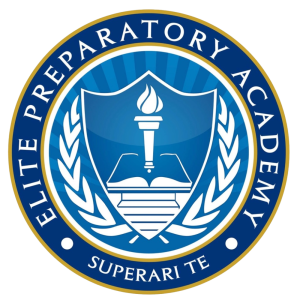Unit 8: Citing Evidence from Informational Texts
Section outline
-
Objective:
Students will read an editorial, identify key arguments, and cite strong evidence from the text to support their analysis and conclusions.
Task:
Read an editorial (either assigned by the teacher or chosen from an approved list), identify the key arguments, and write a response that cites at least three pieces of evidence to support your analysis of the editorial's argument.
Outcome:
Write a well-structured response that analyzes the editorial and uses at least three pieces of evidence from the text to support your conclusions about its argument.
Measurable Objective:
Students will correctly identify the main arguments in the editorial and use at least three pieces of evidence to support their analysis.
Materials List:
- Editorial article (provided by the teacher or selected from an approved list)
- Pen or pencil
- Notebook or digital document for note-taking
- Highlighter (optional)
- Dictionary or thesaurus (optional)
- Access to a computer for writing the response
- Printer (optional for hard copies)
- Printed rubric (for self-assessment)
- Printed outline template (optional)
- Citation guide (MLA or APA format as required)
Evaluation Rubric
Criteria
4 (Excellent)
3 (Good)
2 (Needs Improvement)
1 (Unsatisfactory)
Identification of Key Arguments
Clearly and thoroughly identifies all key arguments in the editorial.
Identifies most key arguments, but may miss one or two important points.
Identifies only some key arguments, missing important details.
Fails to identify key arguments or misinterprets the argument.
Use of Evidence
Uses at least three strong pieces of evidence to support analysis, citing them correctly.
Uses three pieces of evidence, but may have minor issues with citation or explanation.
Uses fewer than three pieces of evidence, or provides weak evidence with unclear citation.
Does not use sufficient evidence or fails to cite properly.
Analysis of Evidence
Provides a thorough and insightful analysis of how each piece of evidence supports the argument.
Analyzes evidence well but may lack depth or clarity in explanation.
Provides limited or unclear analysis of evidence.
Provides little to no analysis of evidence.
Organization
Well-organized response with clear introduction, body paragraphs, and conclusion.
Organization is clear, but may have minor issues with flow or structure.
Response lacks clear organization or has major structural issues.
Response is disorganized or lacks structure.
Grammar and Mechanics
Writing is free of grammatical, spelling, and punctuation errors.
Writing has a few minor errors that do not interfere with understanding.
Writing has several errors that affect clarity.
Writing has many errors, making it difficult to understand.
By the end of this unit, you will be able to analyze an editorial, identify key arguments, and effectively use evidence from the text to support your analysis. This will help you develop strong critical reading and writing skills.
